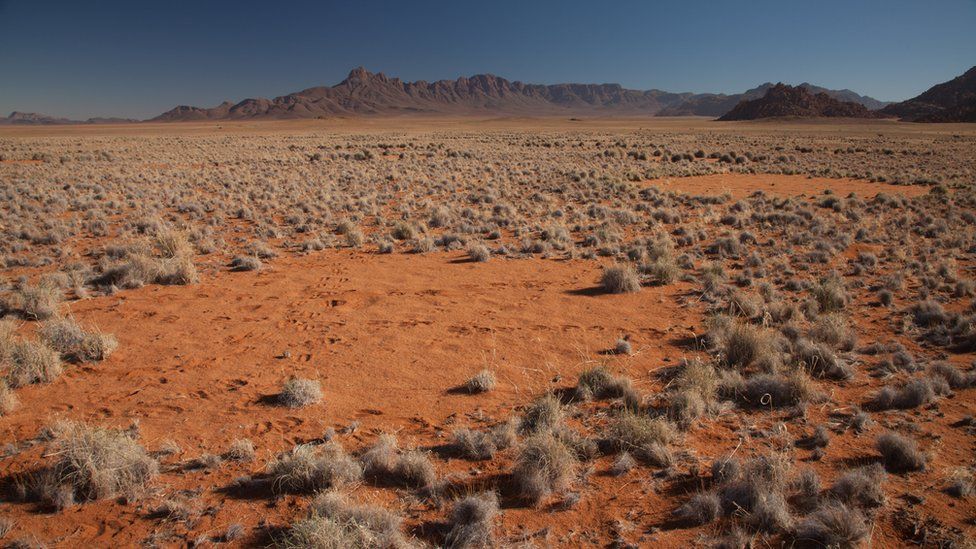Theory seeks to explain Namibia's 'fairy circles'
- Published

One of nature's most puzzling spectacles - the "fairy circles" of Namibia - may have been explained by a new scientific theory.
The circles consist of barren ground, ringed by grass and measuring 2-15m (7-49ft) in diameter.
Computer modelling and field work suggest they could be caused by plants taking advantage of termite activity.
Researchers from the universities of Strathclyde and Princeton outlined the theory in the journal Nature.
Until recently, the phenomenon was thought to be confined to the Namib desert in southern Africa. But in 2014, similar circles were observed in western Australia.
For many years, scientists have debated the possible causes.
Some have argued they are the result of sand termites eating the roots of vegetation while others have suggested that competition between different plant species is the cause.
The new explanation seeks to unify both theories by suggesting it is the interaction between the two that gives rise to the fairy circles.
Termites remove vegetation above their mound in order to conserve water. Vegetation at the perimeter of the mound then takes advantage of the increased moisture levels to grow taller.
Dr Juan Bonachela from the University of Strathclyde's Department of Mathematics and Statistics, said: "There have long been two theories on how these regular patterns, and especially fairy circles, are formed, and both theories are normally presented as mutually exclusive.
"Our findings harmonise both theories and find a possible explanation for regular vegetation patterns observed around the globe.
"In the case of fairy circles, termites remove vegetation on their mounds to increase moisture, which is essential for the insects' survival in dry environments, thus creating the bare disk.
"Vegetation around the mound takes advantage of this water accumulation to grow, and this taller vegetation forms the circle. Regular repetition of the pattern results from different termite colonies competing next to one another.
"This behaviour affects the whole ecosystem, allowing it to survive harsher conditions and recover from droughts much more quickly than if there were no termites."
The research used field data from four different continents and computer simulations.
- Published28 March 2013
- Published31 March 2004